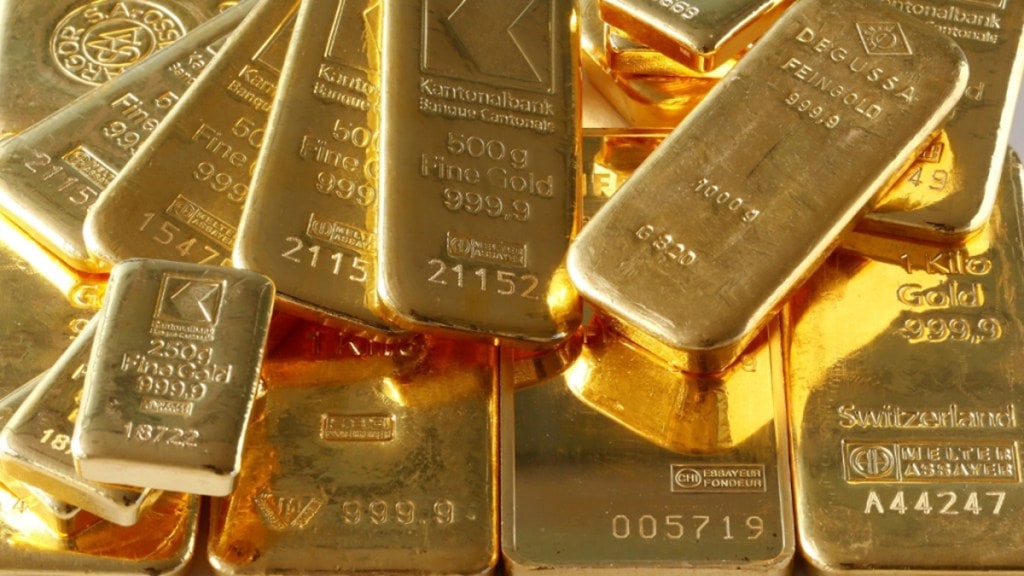Gold loan financiers are expected to raise their full-year disbursement and AUM growth targets as soaring gold prices and tighter credit in unsecured and microfinance segments continue to boost demand for gold loans.
“We had guided for 15% growth in advances last year, but ended up reaching 40%. This year, we have also given a guidance of 15%, but we should be doing much more than that,” George Alexander Muthoot, MD of Muthoot Finance, told FE.
The country’s largest gold-lending NBFC reported a 40% year-on-year rise in gold loans to ₹32,272 crore, taking its standalone loan AUM to a record ₹1,20,031 crore at the end of the first quarter.
Why gold loans are becoming the go-to option
Muthoot said the company typically issues formal full-year guidance only after the second quarter but noted that demand for gold remains strong. “We continue to see huge demand for gold loans because lenders in the microfinance and unsecured space, including credit cards, have tightened their disbursements. The only option left for many people is to take a gold loan. That’s why all types of lenders — banks or NBFCs — are growing in gold loans,” he added.
RBI data supports the trend. Outstanding loans against gold jewellery surged 122% year-on-year to ₹2.94 lakh crore as of July 2025, even as credit card loans grew only 6% to ₹2.91 lakh crore and personal loans rose 8% to ₹15.36 lakh crore.
Shaji Varghese, CEO of Muthoot FinCorp, echoed the robust demand outlook. He said growth is being fuelled by customers without strong credit histories, new-to-credit borrowers, and expanding access to digital gold loans. The flagship company of the Muthoot Pappachan Group reported a 47% jump in standalone AUM to ₹36,787 crore in Q1FY26, while disbursements surged 63% to ₹28,159 crore. “We are hoping that the growth momentum will continue for a longer period,” Varghese said. While the company does not issue guidance, he noted that “given the current momentum, the growth can be much better than last year.”
Varghese added that even the GST rate reduction and consequent increase in household liquidity are unlikely to dent gold loan demand. “When the income levels are higher, confidence is higher, and normally the trade velocity goes high, not the other way,” he said.
Industry participants point out that record gold prices are also fuelling demand. On Friday, 22k/10 gms of gold closed at Rs 1,02,000 — a record high — while 24k/10 gms touched Rs 1,11,280 for the first time. MCX gold ended at Rs 1,09,440, just shy of its all-time high of ₹1,09,656.
“The recent rally in gold prices has naturally resulted in a spike in demand for gold loans, as customers look to leverage the increased value of their assets for liquidity needs,” said Manish Mayank, Head of Gold Loan Business at IIFL Finance. The lender reported a 21% year-on-year increase in loan AUM to Rs 83,889 crore in Q1FY26 and continues to see strong growth in rural and semi-urban markets.
Regulatory changes and digital access accelerate growth
According to Mayank, favourable regulatory changes and digitisation are also supporting growth. In June, the RBI raised the maximum Loan-to-Value (LTV) ratio for loans below Rs 2.5 lakh to 85% from 75%. The LTV for loans between Rs 2.5 lakh and Rs 5 lakh was increased to 80%, while loans above Rs 5 lakh remain capped at 75%. The central bank also removed credit appraisal and end-use monitoring requirements for smaller ticket loans.
Investor sentiment has mirrored the growth momentum. Shares of Muthoot Finance have rallied over 23% since the start of the fiscal to close at Rs 2,929 on Friday, while Manappuram Finance has gained 25% to Rs 232.75. IIFL Finance shares ended at Rs 434.50, up more than 33% since April.

